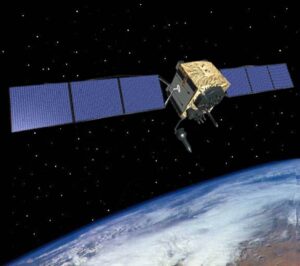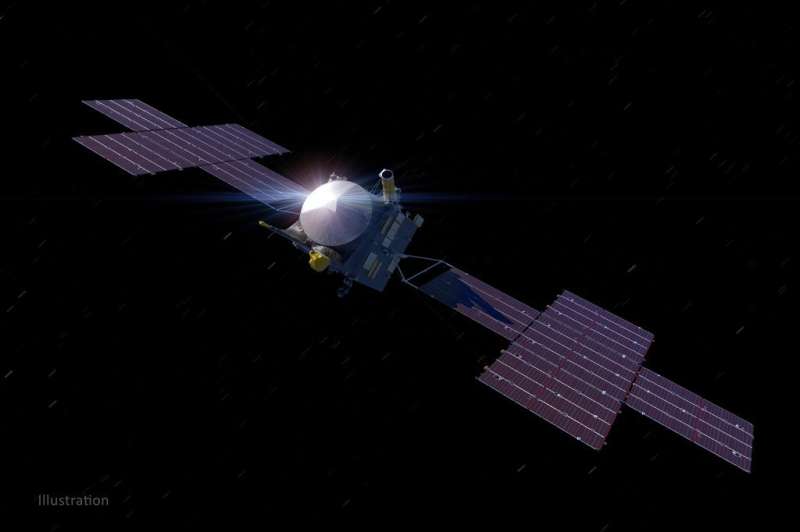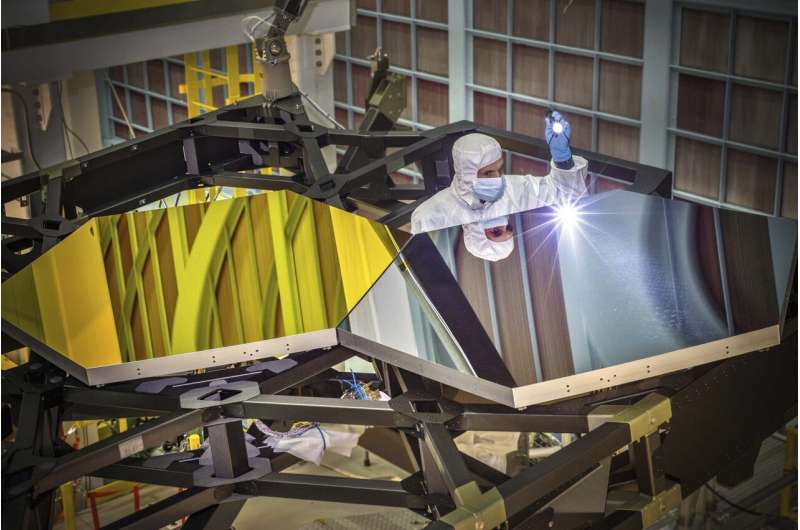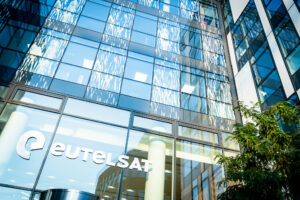A gigantic lane made of raw material for new stars
Tuesday, 21 December 2021 03:06 A group of astronomers, led by researchers from the Max Planck Institute for Astronomy (MPIA), have identified one of the longest known structures in the Milky Way. It stretches some 3900 light-years and consists almost entirely of atomic hydrogen gas. This filament, called "Maggie", could represent a link in the matter cycle of the stars. Analysing the measurements suggests that the atomic gas
A group of astronomers, led by researchers from the Max Planck Institute for Astronomy (MPIA), have identified one of the longest known structures in the Milky Way. It stretches some 3900 light-years and consists almost entirely of atomic hydrogen gas. This filament, called "Maggie", could represent a link in the matter cycle of the stars. Analysing the measurements suggests that the atomic gas Dragon delivery - European science destined for space
Tuesday, 21 December 2021 03:06 The next SpaceX resupply vehicle is packed with European science, ready for delivery to the International Space Station just in time for Christmas.
The Dragon spacecraft is scheduled to launch from NASA's Kennedy Space Center in Florida, USA, at 11:06 CET (10:06 GMT) Tuesday 21 December. But before it does, we take a quick peek at some of the European cargo it carries.
b>Safe air br
The next SpaceX resupply vehicle is packed with European science, ready for delivery to the International Space Station just in time for Christmas.
The Dragon spacecraft is scheduled to launch from NASA's Kennedy Space Center in Florida, USA, at 11:06 CET (10:06 GMT) Tuesday 21 December. But before it does, we take a quick peek at some of the European cargo it carries.
b>Safe air br Research into ageing set to blast into space
Tuesday, 21 December 2021 03:06 Scientists at the University of Liverpool, funded by the UK Space Agency, are using space to understand what happens to human muscles as we age, and why.?
When astronauts spend time in space, without the effects of gravity, their muscles get weaker, just as they do in older age, before recovering when they return to Earth. By studying what happens to muscle tissue in space, the team can co
Scientists at the University of Liverpool, funded by the UK Space Agency, are using space to understand what happens to human muscles as we age, and why.?
When astronauts spend time in space, without the effects of gravity, their muscles get weaker, just as they do in older age, before recovering when they return to Earth. By studying what happens to muscle tissue in space, the team can co SPAINSAT NG program successfully passes Critical Design Review
Tuesday, 21 December 2021 03:06 The SPAINSAT NG programme has successfully passed another important milestone, the critical design review (CDR) of the payload and the complete satellite, including the CDR elements of the Pacis 3 partnership project with the European Space Agency (ESA). The review was declared successful after verifying the good progress of the tests performed on the development models of the X-band payload.
The SPAINSAT NG programme has successfully passed another important milestone, the critical design review (CDR) of the payload and the complete satellite, including the CDR elements of the Pacis 3 partnership project with the European Space Agency (ESA). The review was declared successful after verifying the good progress of the tests performed on the development models of the X-band payload. Kacific goes all-in on AWS to scale up delivery of its broadband internet
Tuesday, 21 December 2021 03:06 Kacific Broadband Satellites has announced that it is going all-in on Amazon Web Services (AWS) to scale up the delivery of its broadband internet for the rural regions of Southeast Asia and the Pacific. Kacific plans to migrate its IT infrastructure and critical business applications to AWS by 2022.
AWS has enabled Kacific to reduce time-to-market and to enhance network management by appr
Kacific Broadband Satellites has announced that it is going all-in on Amazon Web Services (AWS) to scale up the delivery of its broadband internet for the rural regions of Southeast Asia and the Pacific. Kacific plans to migrate its IT infrastructure and critical business applications to AWS by 2022.
AWS has enabled Kacific to reduce time-to-market and to enhance network management by appr Boeing wins $329 million contract to support orbiting GPS satellites
Monday, 20 December 2021 23:11
The U.S. Space Force awarded Boeing a $329.3 million contract to support operations of Global Positioning System satellites for the next 10 years.
U.S. Defense Innovation Unit selects Maxar to produce robotic arms for on-orbit servicing
Monday, 20 December 2021 22:21
Maxar Technologies won a $9.3 million Defense Department contract to design and deliver two in-space servicing robotic arms for the Defense Innovation Unit.
How NASA's Psyche mission will explore an unexplored world
Monday, 20 December 2021 20:44
Launching in August 2022 and arriving at the asteroid belt in 2026, NASA's Psyche spacecraft will orbit a world we can barely pinpoint from Earth and have never visited.
The target of NASA's Psyche mission—a metal-rich asteroid, also called Psyche, in the main belt between Mars and Jupiter—is an uncharted world in outer space. From Earth- and space-based telescopes, the asteroid appears as a fuzzy blur. What scientists do know, from radar data, is that it's shaped somewhat like a potato and that it spins on its side.
By analyzing light reflected off the asteroid, scientists hypothesize that asteroid Psyche is unusually rich in metal. One possible explanation is that it formed early in our solar system, either as a core of a planetesimal—a piece of a planet—or as primordial material that never melted. This mission aims to find out, and in the process of doing so, they expect to help answer fundamental questions about the formation of our solar system.
Mynaric selected by DARPA to design next-generation optical terminals
Monday, 20 December 2021 20:38
Mynaric has been selected to participate in a DARPA program to develop next-generation laser communications terminals.
FAA license boosts Georgia spaceport, but more reviews ahead
Monday, 20 December 2021 19:45A federal agency on Monday granted a license for a launchpad that would fly commercial rockets from coastal Georgia.
The Federal Aviation Administration's approval of a launch site operator license for Spaceport Camden marks a significant milestone for the Georgia space project, though many reviews and permits are needed before any rockets can actually launch.
A Camden County leader said Monday that the project propels Georgia into the space race that's seen civilians and celebrities flown into space in recent months.
"This once in a generation opportunity will provide a new frontier of economic prosperity for Camden, the region and the state of Georgia," Steve Howard, Camden County Administrator and Spaceport Camden executive project lead, said in a statement after the FAA's decision was announced.
"Georgia is part of the new space race, and we will become one of the leaders," Howard added.
Even with the license, the FAA says that more comprehensive reviews would be needed before any rockets can be launched.
In its 36-page decision released Monday, the FAA said it considered potential impacts to the climate and environment, public comments, and the agency's responsibility to encourage and promote commercial space launches by the private sector.
"Sea level rise and other climatological changes, such as increase in extreme weather events, may affect the spaceport in the coming years," the FAA wrote in its report.
Hubble telescope's bigger, more powerful successor to soar
Monday, 20 December 2021 19:44
Webb secured inside Ariane 5 fairing
Monday, 20 December 2021 17:00
On Friday 17 December, the Ariane 5 rocket fairing was closed around the James Webb Space Telescope. This protective fairing, or ‘nose cone’, will shield the telescope during liftoff and its journey through the atmosphere on 24 December.
L3Harris’ missile-tracking satellites pass critical design reviews
Monday, 20 December 2021 16:29
Missile-tracking satellites developed by L3Harris for the U.S. Missile Defense Agency and the Space Development Agency passed critical design reviews.
Eva Berneke to be Eutelsat’s next CEO
Monday, 20 December 2021 16:09
French satellite operator Eutelsat has appointed Eva Berneke, a technology and telecoms veteran from outside the space industry, to be the company’s next chief executive officer.
Human muscle cells to be launched into space for aging research
Monday, 20 December 2021 15:19
Tiny human muscle cells will be blasted into space in an experiment that could help people live longer, healthier lives.
The experiment, called MicroAge, is set to be launched to the International Space Station (ISS) on Tuesday.
Space will be used to understand what happens to human muscles as people age, and why.
Lab-grown human muscle cells, the size of a grain of rice, have been put into small 3D-printed holders the size of a pencil sharpener.
Once in space, they will be electrically stimulated to induce contractions in the muscle tissue, and the scientists will look closely to see what happens.
Spending time without the effects of gravity can cause astronauts' muscles to get weaker, just as they do in older age, before recovering when they return to Earth.
University of Liverpool researchers, funded by the UK Space Agency, will study what happens to muscle tissue in space, and compare the findings to what happens on Earth.

